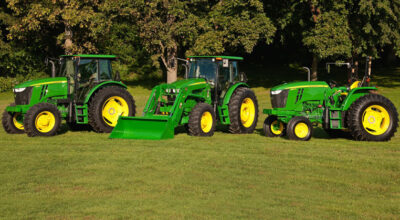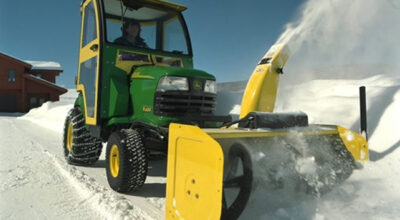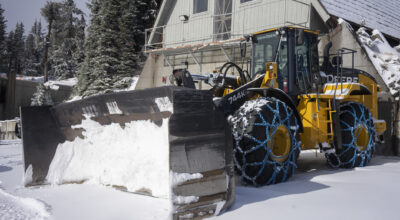Whether you’re operating a brand new riding mower from Deere or one you’ve had for years, battery maintenance is essential to keeping your equipment operating efficiently over time. Without taking the proper maintenance measures, your machine may eventually be unable to operate.
Let’s take a look at some battery maintenance measures you can take into account and how you can use these tips to keep your equipment running smoothly.
Inspecting and Cleaning Battery Terminals
https://www.youtube.com/watch?v=AT4oBSrRbS0
- Always check the terminals for corrosion. When you’re inspecting the battery, it’s critical to always check for corrosion, which may naturally occur over time. Corrosion happens when hydrogen gas is released from battery acid. If it is left untreated, it can prevent proper recharging of the battery, or even degrade the terminals and wires over time.
- Begin with the negative terminal. Make sure to keep them separated. Use a wire brush and a battery cleaner spray to clean the terminals. The cleaner will neutralize the acid in the corrosion, which will ultimately make it safe to clean.
- Spray every area. This means spraying even areas that are not corroded, just for maintenance purposes every time you check your battery.
- Allow the spray to sit. Leave the battery cleaner spray on for a few minutes, then use a terminal brush to remove corrosion build-up until the metal on the terminal and posts are visible. Afterward, flush them with water.
- Apply battery terminal protectant spray. Using this will help you prevent future corrosion. For the best results, spray your battery with this applicant three to four times per year.
- Reconnect the battery. If your machine was initially having trouble starting, try it again once the corrosion is removed from the terminals. If it starts and runs regularly, you have successfully diagnosed and corrected a problem specifically linked to corrosion.
- Additional troubleshooting. If your machine does not start after you have taken these steps, you can use battery booster cables or a battery charger to address the issue.
Remember: batteries should always be fully charged before they are placed into storage. They will always discharge over time, but lower temperatures slow the process. If you won’t be using your equipment for an extended period of time, store it in a cool location.
For more information, on battery maintenance, watch the video below.
If you have any questions about John Deere equipment, you can contact your local John Deere dealer.
If you enjoyed this post or want to read others, feel free to connect with us on Facebook, Pinterest, or Twitter!


